Standard [CURRENT]
ASTM E 3461:2025
Standard Guide for Principles of Circular Product Design
- Publication date
- 2025
- Original language
- English
- Pages
- 6
- Publication date
- 2025
- Original language
- English
- Pages
- 6
- DOI
- https://dx.doi.org/10.1520/E3461-25
Product information on this site:
Quick delivery via download or delivery service
Buy securely with a credit card or pay upon receipt of invoice
All transactions are encrypted
Short description
1.1 This standard provides guidance for circular product design (CPD) through the introduction of general principles that extend the usability of products and their components, support material recovery at the end-of-use (EoU), and minimize resource use while considering environmental, economic, and social sustainability benefits across the product life-cycle. 1.2 In this guide, circular product design does not address life-cycle assessment (LCA) or product category rules (PCR). LCA, and other approaches such as life-cycle costing (LCC) and social life-cycle assessment (SLCA), are tools that can be used to analyze the impacts of a product within a circular economy framework and compare different circular economy strategies. But application of these tools alone does not guarantee circularity or holistic product circularity evaluation. 1.3 The general circular product design principles introduced in this guide provide guidelines and supplementary context for product designers to better understand, apply, and qualify design decisions advantageous to the creation of products for the circular economy. 1.4 This guide recognizes that product circularity may arise from various design solutions associated with specific life-cycle stages. As such, general circular product design principles presented in the guide are separated into four circular product life-cycle (CPLC) stages: material acquisition, production and manufacturing, use, and end-of-use (EoU). 1.5 The general principles identified in this guide can be applied to all types of products, including consumable products and products with long service lives, based on user-defined boundaries, identification of functions, product use, and understanding of constraints related to product design. 1.6 This standard does not purport to address all of the safety concerns, if any, associated with its use. It is the responsibility of the user of this standard to establish appropriate safety, health, and environmental practices and determine the applicability of regulatory limitations prior to use. 1.7 This international standard was developed in accordance with internationally recognized principles on standardization established in the Decision on Principles for the Development of International Standards, Guides and Recommendations issued by the World Trade Organization Technical Barriers to Trade (TBT) Committee.
ICS
13.020.20
DOI
https://dx.doi.org/10.1520/E3461-25
Also available in
Loading recommended items...
Loading recommended items...
Loading recommended items...
Loading recommended items...

